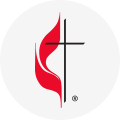Roderic L. Mullen, Day 6: There is a wonderful old icon from the sixth century, still kept at Mt. Sinai. Several feet tall, as ancient icons often are, it shows Christ robed in majesty with a halo around his head and looking with interest directly at the viewer. In his left hand he holds a Bible or gospel book. His right hand is raised in a gesture of teaching or blessing. In Eastern Orthodox thought, the icon represents Christ Pantocrator, that is, “Christ, ruler of all.” He is at the same time majestic and awesome, yet benevolent and interested in our welfare. It is also clear from his gaze that he knows all about us.
Stories
Week of Prayer for Christian Unity – Day 5
Seyun Hwang, Day 5: Have you ever recited a creed and felt that the words seemed routine rather than meaningful? That happened to me one Sunday morning. As the phrase “under Pontius Pilate” rolled off my tongue, I had to pause. Why do I often name this Roman governor in passing—this hand of imperial power that played a role in the death of Jesus? How can I miss its weight?
Week of Prayer for Christian Unity – Day 4
Roderic L. Mullen, Day 4: The words of the wonderful Christmas hymn, “Once in Royal David’s City,” echo in my mind as I write this meditation. What does it mean to say with the hymn, “he came down to earth from heaven?” When we picture the babe in a manger, “little, weak and helpless,” it is hard for us to believe at the same time that he is “God and Lord of all.”
Week of Prayer for Christian Unity – Day 3
Shawn Blackwelder, Day 3: As the Council of Nicaea sought to bring about unity in the Church, the primary obstacle was the existence of differing beliefs about the nature of Christ. Was it homoiousios, as Arius argued, that the Father and the Son were of a similar nature and essence, or was it the belief asserted by Athanasius, that it was homoousius, that the Father and Son were of the same nature and essence? This was (and in some corners of the Church, continues to be) the most controversial question.
Week of Prayer for Christian Unity – Day 2
Rob Licht, Day 2:
According to the Book of Genesis, the creation of heaven and earth begins in darkness, the kind of darkness that defies being named. It is the darkness before darkness, a darkness without form or substance, a fathomless deep, a cavernous void that doesn’t know whether it is or it isn’t. The historic doctrines of the Church insist that God created the universe out of nothing.
Week of Prayer for Christian Unity – Day 1
Shawn Blackwelder, Day 1: The Shema, a daily prayer and affirmation of faith for our Jewish siblings that has been shared with us, gives an important reminder in a polytheistic world. Depending on the translation you read, it may say, “The LORD is our God, the LORD alone,” or “Our God is the LORD! Only the LORD!” or as it reads above, “The LORD our God, the LORD is one.” Read one way, it seems to call for loyalty and obedience only to God. Read another way, it is a statement about God’s unique nature, God’s one-ness.

